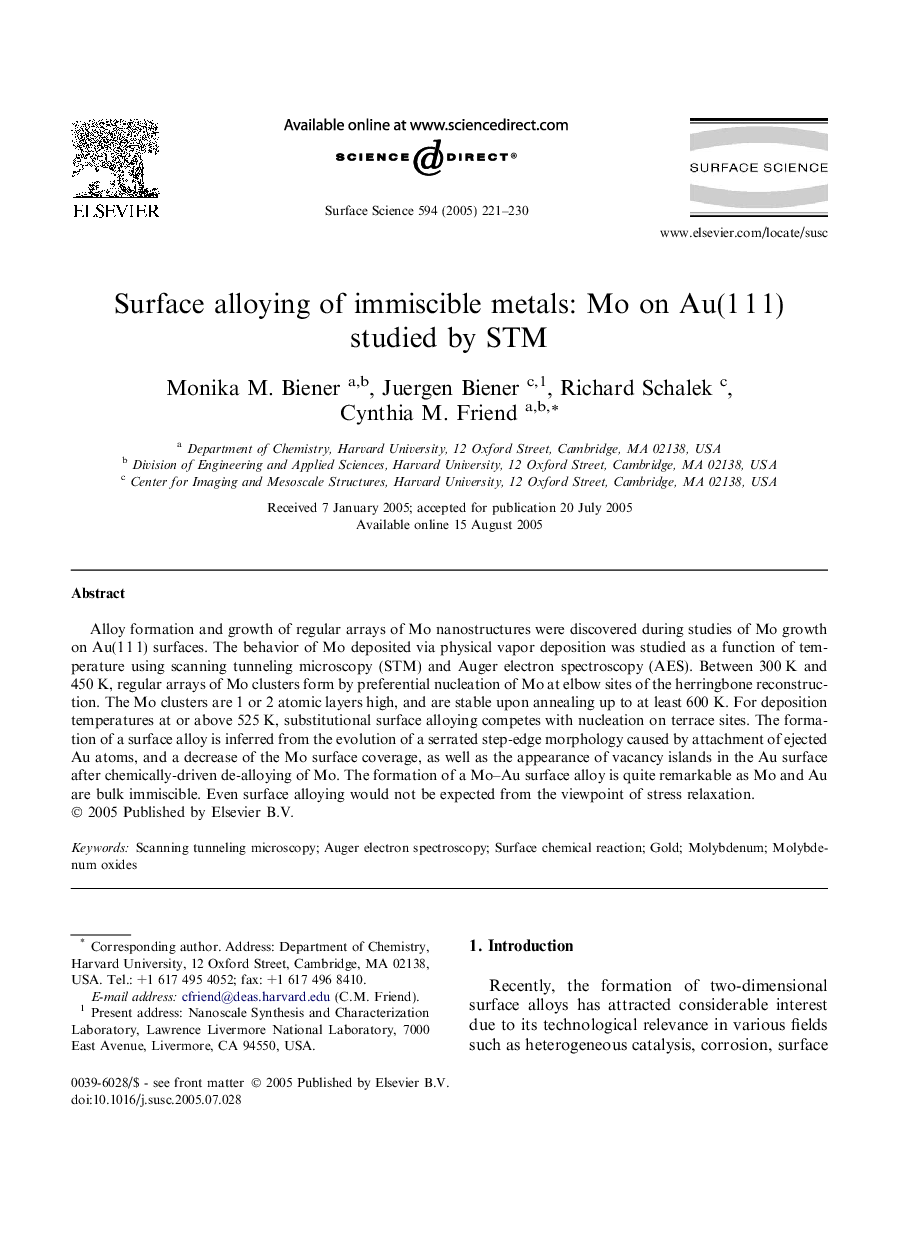| Article ID | Journal | Published Year | Pages | File Type |
|---|---|---|---|---|
| 9594973 | Surface Science | 2005 | 10 Pages |
Abstract
Alloy formation and growth of regular arrays of Mo nanostructures were discovered during studies of Mo growth on Au(1Â 1Â 1) surfaces. The behavior of Mo deposited via physical vapor deposition was studied as a function of temperature using scanning tunneling microscopy (STM) and Auger electron spectroscopy (AES). Between 300Â K and 450Â K, regular arrays of Mo clusters form by preferential nucleation of Mo at elbow sites of the herringbone reconstruction. The Mo clusters are 1 or 2 atomic layers high, and are stable upon annealing up to at least 600Â K. For deposition temperatures at or above 525Â K, substitutional surface alloying competes with nucleation on terrace sites. The formation of a surface alloy is inferred from the evolution of a serrated step-edge morphology caused by attachment of ejected Au atoms, and a decrease of the Mo surface coverage, as well as the appearance of vacancy islands in the Au surface after chemically-driven de-alloying of Mo. The formation of a Mo-Au surface alloy is quite remarkable as Mo and Au are bulk immiscible. Even surface alloying would not be expected from the viewpoint of stress relaxation.
Keywords
Related Topics
Physical Sciences and Engineering
Chemistry
Physical and Theoretical Chemistry
Authors
Monika M. Biener, Juergen Biener, Richard Schalek, Cynthia M. Friend,
